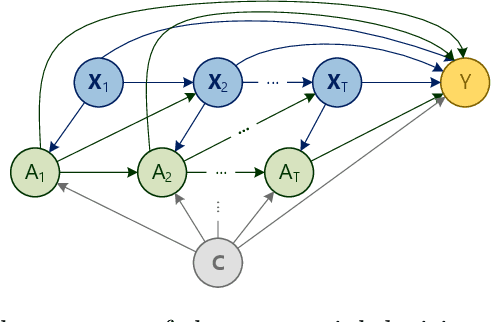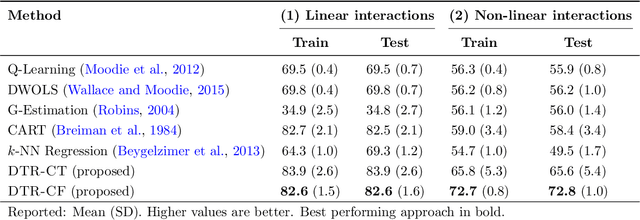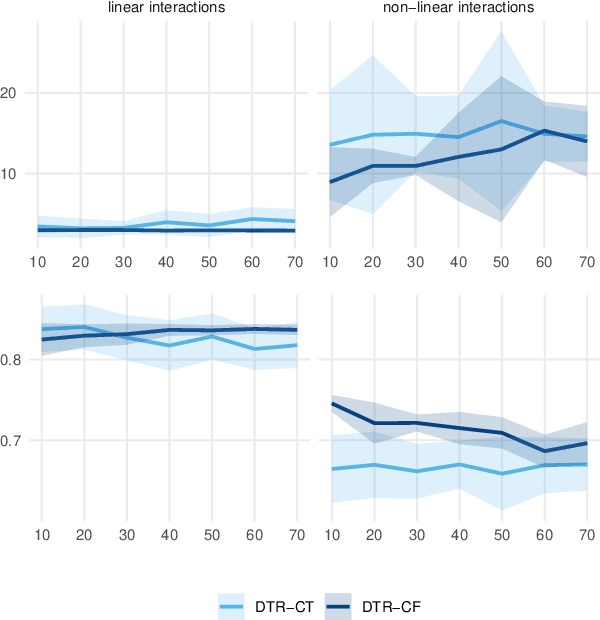Joel Persson
Auditing a Dutch Public Sector Risk Profiling Algorithm Using an Unsupervised Bias Detection Tool
Feb 03, 2025Abstract:Algorithms are increasingly used to automate or aid human decisions, yet recent research shows that these algorithms may exhibit bias across legally protected demographic groups. However, data on these groups may be unavailable to organizations or external auditors due to privacy legislation. This paper studies bias detection using an unsupervised clustering tool when data on demographic groups are unavailable. We collaborate with the Dutch Executive Agency for Education to audit an algorithm that was used to assign risk scores to college students at the national level in the Netherlands between 2012-2023. Our audit covers more than 250,000 students from the whole country. The unsupervised clustering tool highlights known disparities between students with a non-European migration background and Dutch origin. Our contributions are three-fold: (1) we assess bias in a real-world, large-scale and high-stakes decision-making process by a governmental organization; (2) we use simulation studies to highlight potential pitfalls of using the unsupervised clustering tool to detect true bias when demographic group data are unavailable and provide recommendations for valid inferences; (3) we provide the unsupervised clustering tool in an open-source library. Our work serves as a starting point for a deliberative assessment by human experts to evaluate potential discrimination in algorithmic-supported decision-making processes.
EventChat: Implementation and user-centric evaluation of a large language model-driven conversational recommender system for exploring leisure events in an SME context
Jul 05, 2024Abstract:Large language models (LLMs) present an enormous evolution in the strategic potential of conversational recommender systems (CRS). Yet to date, research has predominantly focused upon technical frameworks to implement LLM-driven CRS, rather than end-user evaluations or strategic implications for firms, particularly from the perspective of a small to medium enterprises (SME) that makeup the bedrock of the global economy. In the current paper, we detail the design of an LLM-driven CRS in an SME setting, and its subsequent performance in the field using both objective system metrics and subjective user evaluations. While doing so, we additionally outline a short-form revised ResQue model for evaluating LLM-driven CRS, enabling replicability in a rapidly evolving field. Our results reveal good system performance from a user experience perspective (85.5% recommendation accuracy) but underscore latency, cost, and quality issues challenging business viability. Notably, with a median cost of $0.04 per interaction and a latency of 5.7s, cost-effectiveness and response time emerge as crucial areas for achieving a more user-friendly and economically viable LLM-driven CRS for SME settings. One major driver of these costs is the use of an advanced LLM as a ranker within the retrieval-augmented generation (RAG) technique. Our results additionally indicate that relying solely on approaches such as Prompt-based learning with ChatGPT as the underlying LLM makes it challenging to achieve satisfying quality in a production environment. Strategic considerations for SMEs deploying an LLM-driven CRS are outlined, particularly considering trade-offs in the current technical landscape.
Learning Optimal Dynamic Treatment Regimes Using Causal Tree Methods in Medicine
Apr 14, 2022



Abstract:Dynamic treatment regimes (DTRs) are used in medicine to tailor sequential treatment decisions to patients by considering patient heterogeneity. Common methods for learning optimal DTRs, however, have shortcomings: they are typically based on outcome prediction and not treatment effect estimation, or they use linear models that are restrictive for patient data from modern electronic health records. To address these shortcomings, we develop two novel methods for learning optimal DTRs that effectively handle complex patient data. We call our methods DTR-CT and DTR-CF. Our methods are based on a data-driven estimation of heterogeneous treatment effects using causal tree methods, specifically causal trees and causal forests, that learn non-linear relationships, control for time-varying confounding, are doubly robust, and explainable. To the best of our knowledge, our paper is the first that adapts causal tree methods for learning optimal DTRs. We evaluate our proposed methods using synthetic data and then apply them to real-world data from intensive care units. Our methods outperform state-of-the-art baselines in terms of cumulative regret and percentage of optimal decisions by a considerable margin. Our work improves treatment recommendations from electronic health record and is thus of direct relevance for personalized medicine.
 Add to Chrome
Add to Chrome Add to Firefox
Add to Firefox Add to Edge
Add to Edge